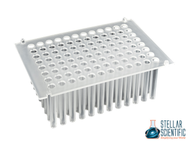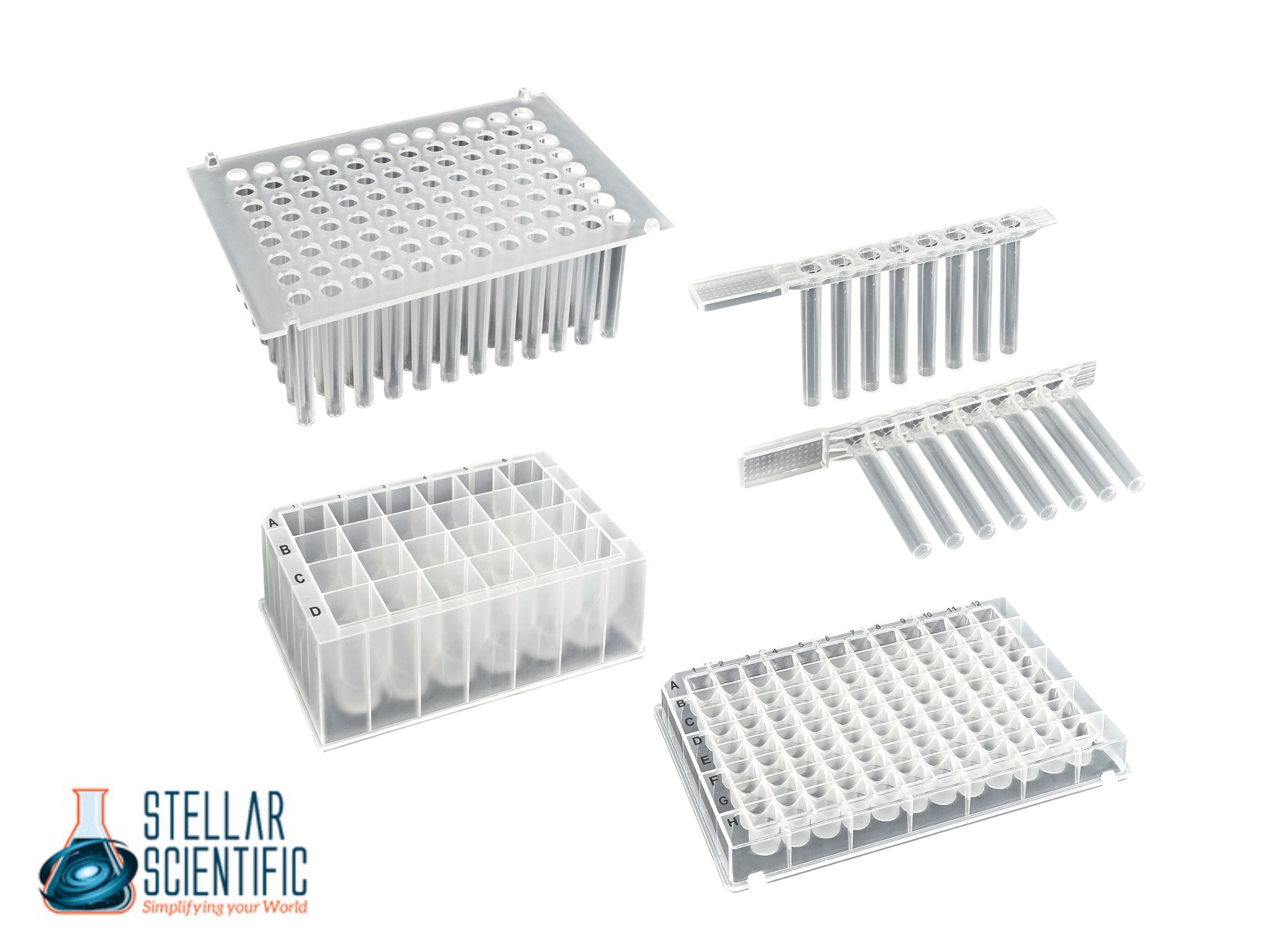A Complete Guide to KingFisher™ Compatible Plates and Combs: How They Optimize Automated Nucleic Acid Extraction
16th Oct 2025
Nucleic acid extraction is a crucial process in molecular biology, supporting applications like diagnostics, research, and gene sequencing. Traditional methods can be labor-intensive, so many laboratories now use automated systems to improve workflow efficiency. Among these systems, KingFisher™ compatible plays an essential role in automating nucleic acid extraction. In this guide, we’ll explore their functionality, volume capacities, and best practices for cleaning and maintaining them.
What Are KingFisher™ Compatible Plates and Combs Used For in Nucleic Acid Extraction?
How Do KingFisher™ Compatible Plates Facilitate Automated Nucleic Acid Extraction?
KingFisher™ compatible plates are integral to the automated nucleic acid extraction process. These plates hold samples in individual wells, enabling magnetic bead-based extraction. When placed in a KingFisher™ instrument, magnetic beads bind nucleic acids from the sample. Available in various configurations, such as 96-well and 24-well plates, they cater to different extraction scales.
The function of these plates is to provide a stable environment for the magnetic beads during the extraction process. As the KingFisher™ system moves the plate through different stages of the extraction, magnetic beads isolate nucleic acids, such as DNA or RNA, from other components in the sample.
How Do KingFisher™ Compatible Combs Support the Extraction Process?
While KingFisher™ compatible deep well plates provide structure for sample processing, combs ensure the magnetic beads align properly and move through the wells. This movement is essential for collecting and washing the magnetic beads during extraction. Combs enable the beads to bind nucleic acids, ensuring efficient extraction and consistent results.
What Are the Volume Capacities of KingFisher™ Compatible Plates and Combs?
How Does Plate Volume Capacity Impact Nucleic Acid Extraction?
KingFisher™ compatible plate configurations come in different volume capacities suitable for various extraction needs. The most common configuration is the 96-well plate, which holds about 200-300 μL of liquid per well. This plate is ideal for a wide range of sample types, from small-scale extractions to larger, high-throughput processes.
The volume capacity of these plates plays a critical role in the efficiency of nucleic acid extraction. By allowing simultaneous processing of multiple samples, researchers can streamline workflows, increase throughput, and save valuable time. This is particularly beneficial in high-demand research environments, where time is often of the essence.
Do Combs Have Different Volume Capacities?
KingFisher™ compatible combs also come in various sizes to match the volume capacities of their corresponding plates. They are designed to handle the specific well sizes of the plates, ensuring that the beads can efficiently move throughout the sample.
For example, the combs for 96-well plates are tailored to facilitate the movement of magnetic beads in each well, optimizing the extraction process. The right comb ensures that the beads move freely and adhere properly to the nucleic acids, which is key to obtaining high-quality extracted material.
How Does the Volume Capacity Affect Research Workflow?
Their volume capacities are particularly relevant in local research settings where sample throughput and consistency are important. Smaller research labs can benefit from the ability to process smaller sample sizes efficiently, while larger labs may rely on higher-capacity plates for large-scale extractions.
Choosing the appropriate plate and comb setup based on your lab's needs ensures that you can achieve the desired throughput without compromising on extraction quality. To learn more about volume capacities and their applications, check out KingFisher™-compatible plates.
What Are the Best Practices for Cleaning and Maintaining KingFisher™ Compatible Plates and Combs?
Why Is Regular Cleaning Essential?
Regular cleaning and maintenance of KingFisher™ compatible PCR plates and combs are crucial for ensuring long-term performance. Residue left from previous extractions can cause cross-contamination, compromising the quality of future samples.
How Should You Clean it?
Cleaning it should be part of your routine workflow. After each use, wash them with mild detergents and deionized water to remove any residual materials. Avoid harsh chemicals as they can damage the surface. A soft brush can help remove stubborn residues without scratching.
Ensure the plates are thoroughly dried before storage, as any moisture left behind could lead to mold or bacterial growth.
What Are the Storage and Handling Recommendations?
Proper storage is essential for maintaining their longevity. These components should be stored in a clean, dry area away from direct sunlight or excessive heat. Storing them in a controlled environment prevents physical damage that could lead to poor extraction performance.
When handling plates and combs, be gentle. Rough handling can cause warping or breakage, compromising the extraction quality.
How Can You Ensure Long-Term Functionality?
Regular inspection for signs of wear and tear is crucial. Over time, the magnetic beads’ interaction with the plates can cause surface erosion or scratching, which may reduce the efficiency of the extraction process. If you notice any significant damage, it may be time to replace the plate or comb.
Additionally, ensuring that the system is calibrated regularly will help maintain optimal performance. Refer to the manufacturer’s guidelines for the specific maintenance and calibration schedule for your system.
KingFisher™ compatible plates and combs are indispensable components in automated nucleic acid extraction, helping streamline research workflows. By understanding their function, volume capacities, and proper cleaning and maintenance, researchers can ensure that these tools continue to perform optimally for high-quality extractions. In local research settings, choosing the correct configuration and adhering to best practices for care and maintenance will ensure efficiency and reliability for years to come.
How Can KingFisher™ Compatible Plates and Combs Improve My Research?
Integrating it into your automated nucleic acid extraction workflow increases throughput, reduces hands-on time, and improves consistency. Whether you’re working in a small research lab or a high-throughput facility, selecting the right plate and comb configuration will optimize your extraction processes.
With its precise design, it ensures high-quality nucleic acid extractions, making it indispensable for modern molecular biology research.
To Sum Up
KingFisher™ compatible plates and combs are essential for efficient and reliable nucleic acid extraction. Understanding their functions, volume capacities, and proper maintenance ensures better efficiency and accuracy in your research. Proper care guarantees long-term performance, helping you achieve optimal extraction results for years to come.
Explore our product range and get expert guidance from Stellar Scientific to enhance your nucleic acid extraction process today. Reach out to us for expert advice on selecting the right setup for your research needs!
KingFisher™ is a registered trademark of Thermo Fisher Scientific.


